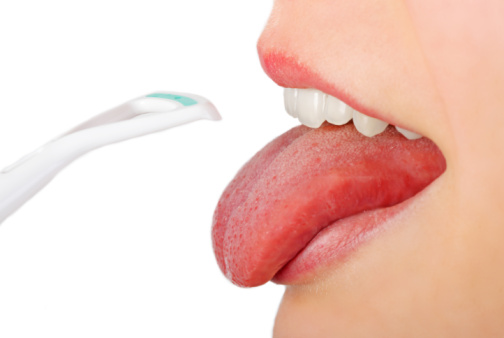Though it sounds like a medieval torture tool, a tongue scraper is actually an effective oral hygiene aid. Even in ancient India and China, people cleaned their tongues to remove toxic debris. In the 1900s, people used tongue scrapers fashioned from ivory, silver, or tortoise shell.
Today, tongue scrapers are usually made of plastic, and most have a U-shaped head and a handle. However, some new toothbrushes feature a tongue scraper in the form of indentations on the back of the head, opposite the bristles. Floss or toothbrush bristles can also be used as a tongue scraper.
Why scrape the tongue?
On the surface, pardon the pun, tongue scraping removes bacteria, food particles, dead cells, and fungi from the tongue. The practice can also reduce halitosis (bad breath). Bacteria on the tongue produce smelly compounds that, according to some studies, account for 80-95% of halitosis. Based on this research, only 5-20% of halitosis is caused by bacteria between and on teeth, in the back of the mouth, and in the stomach.
How to scrape the tongue…
The stinky bacteria you want to remove by tongue scraping reside on the back of the tongue. While “scrape” tends to have negative connotations, as when one “scrapes” his knee, tongue scraping should be gentle to avoid causing abrasions or damaging taste buds. If you have a sensitive gag reflex, relax the tongue and throat and exhale when scraping your tongue.
Got halitosis? Visit Dr. Pate. Contact Dentistry in Buckhead at 404-266-9424 to schedule an appointment. Bad breath can be a sign of improper oral hygiene, but it may also signify tooth decay or infection. A dental checkup will let Dr. Pate determine how to address your bad breath so that you can feel good and breathe easy!

